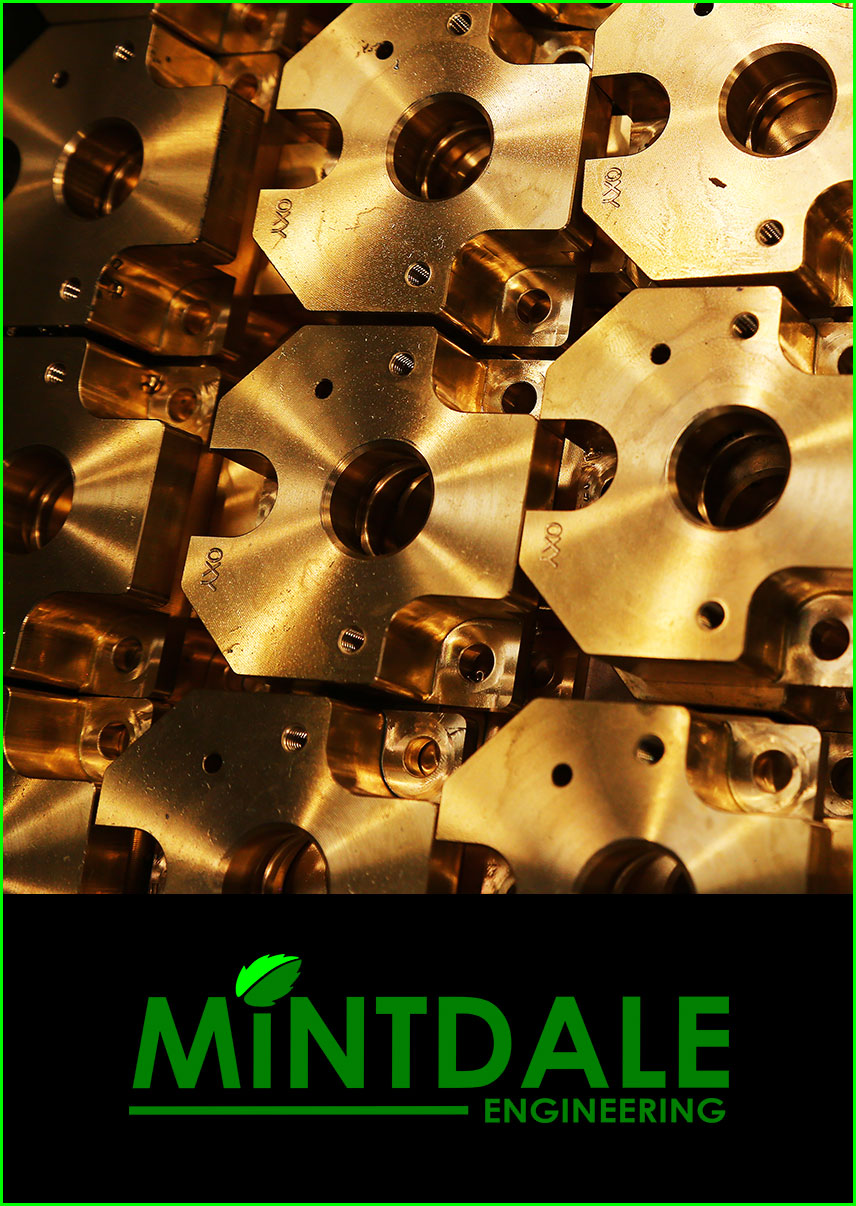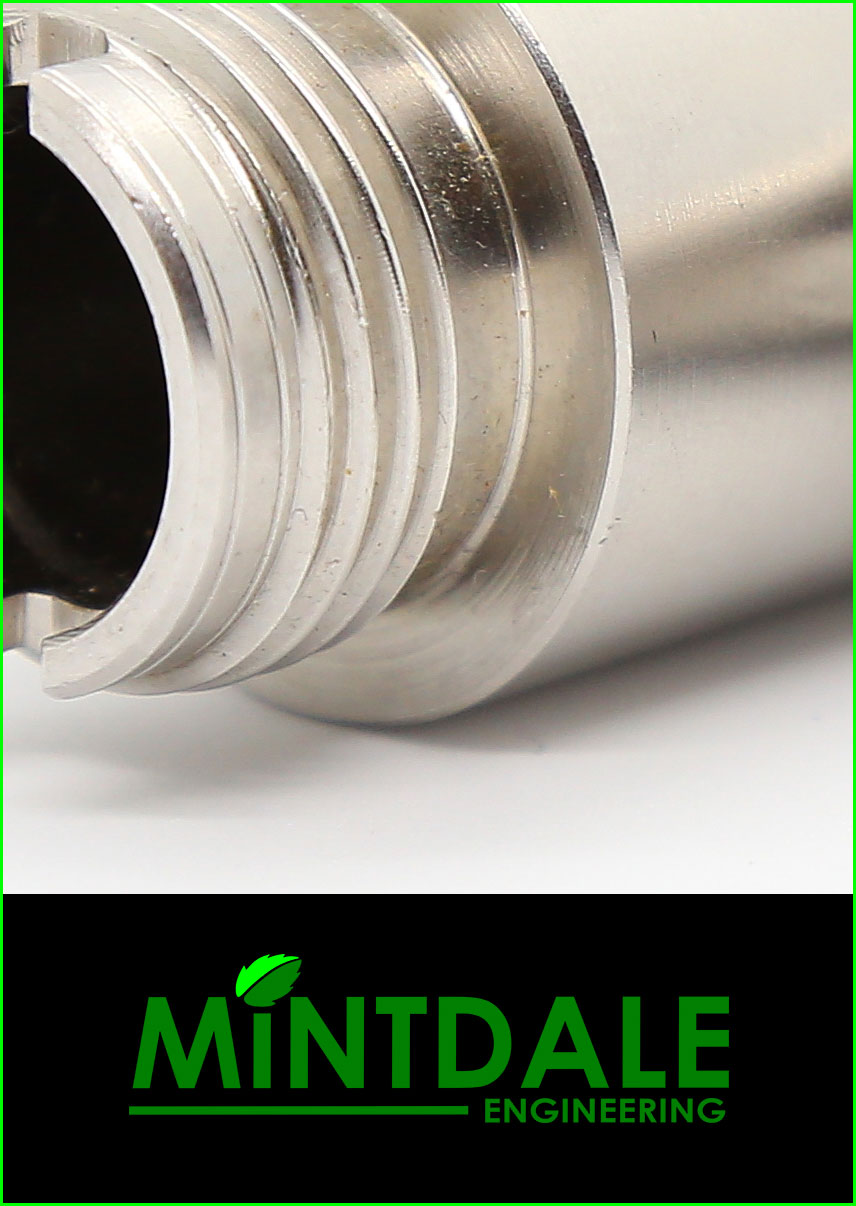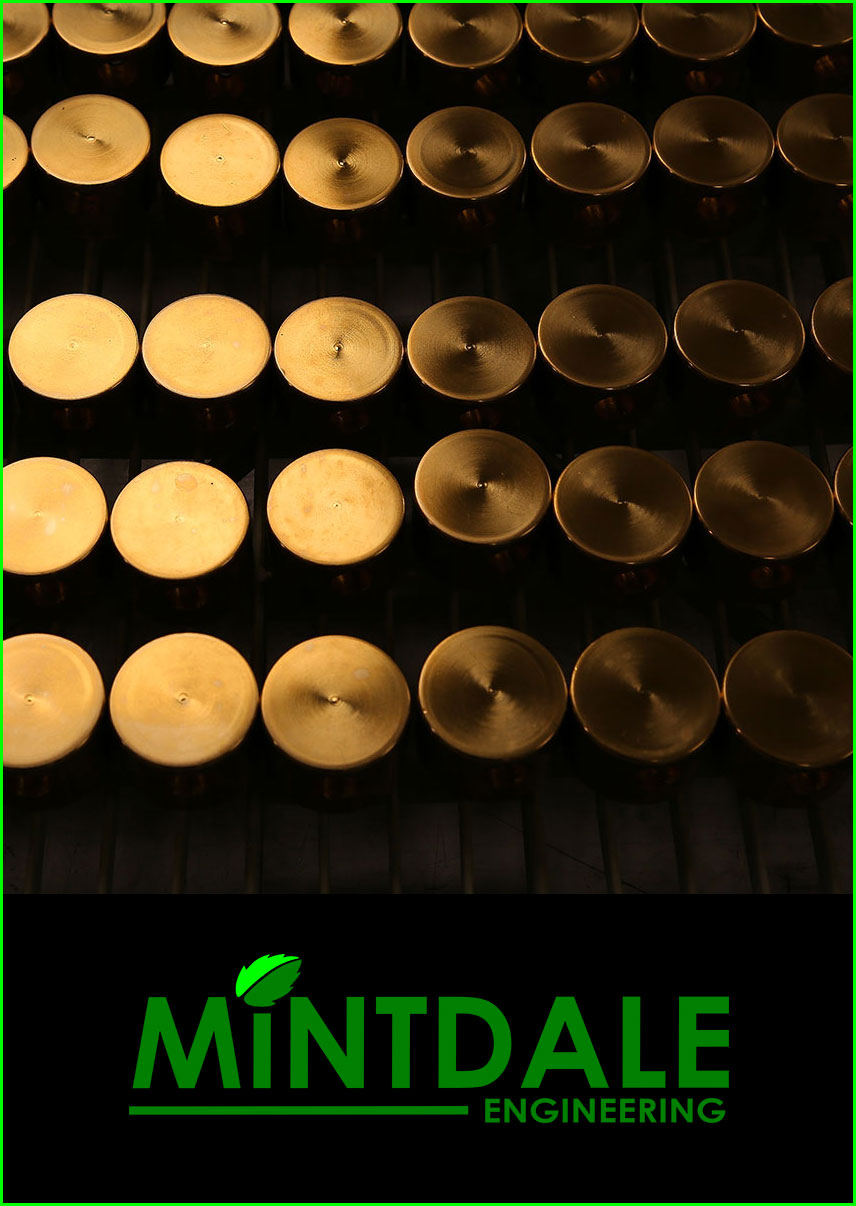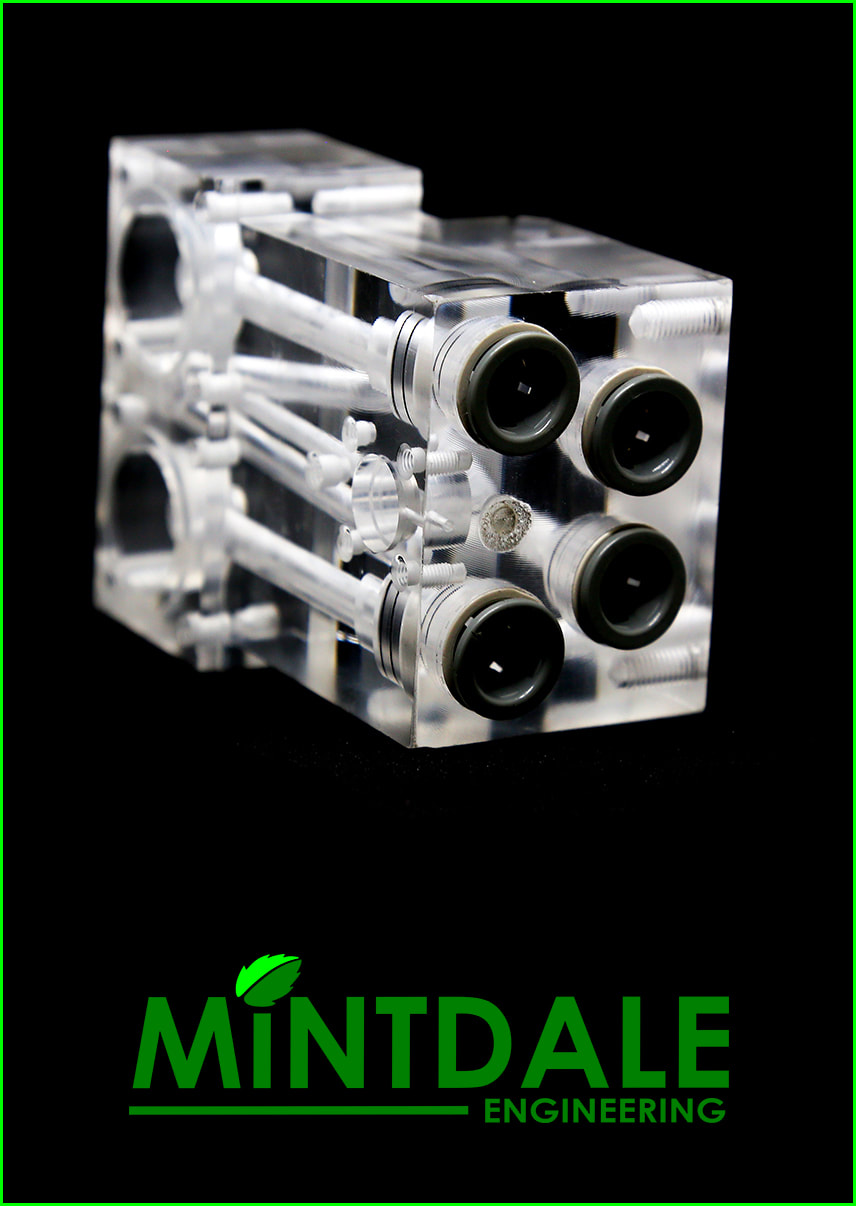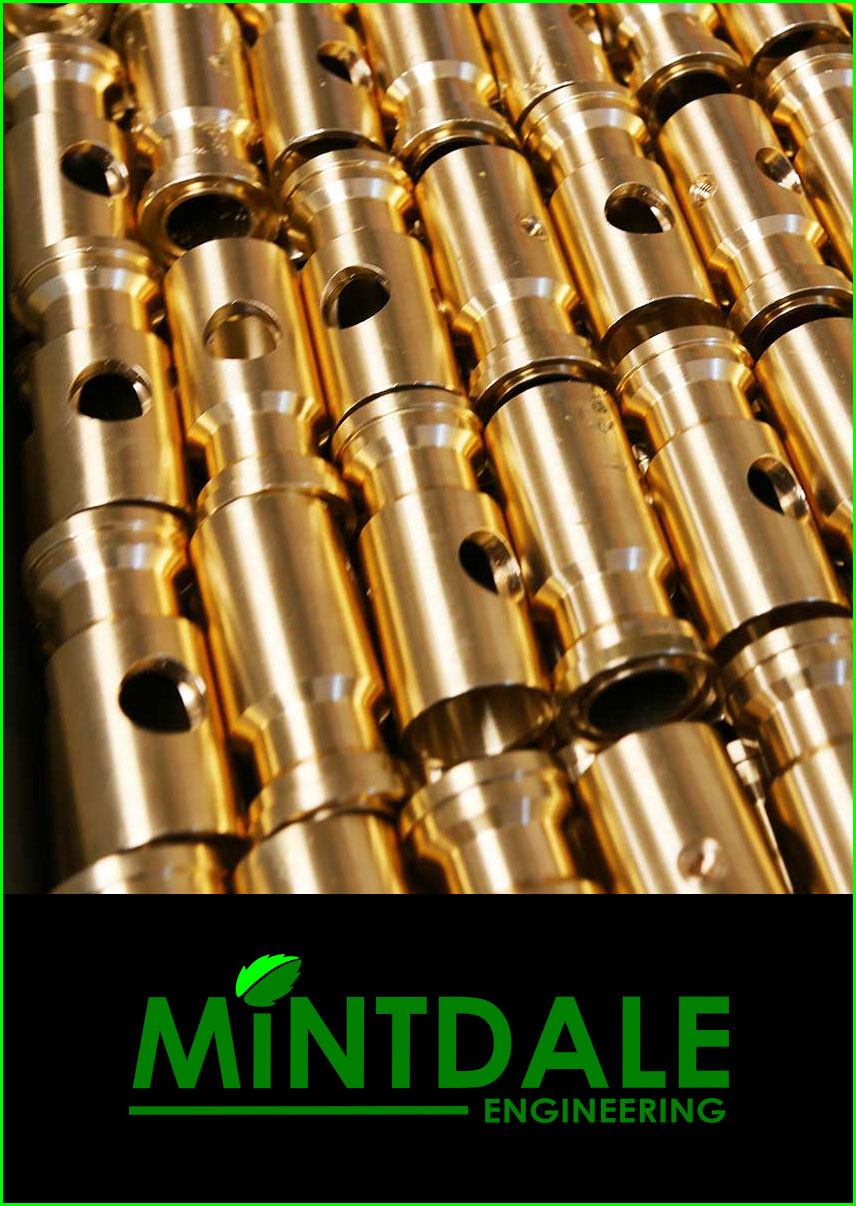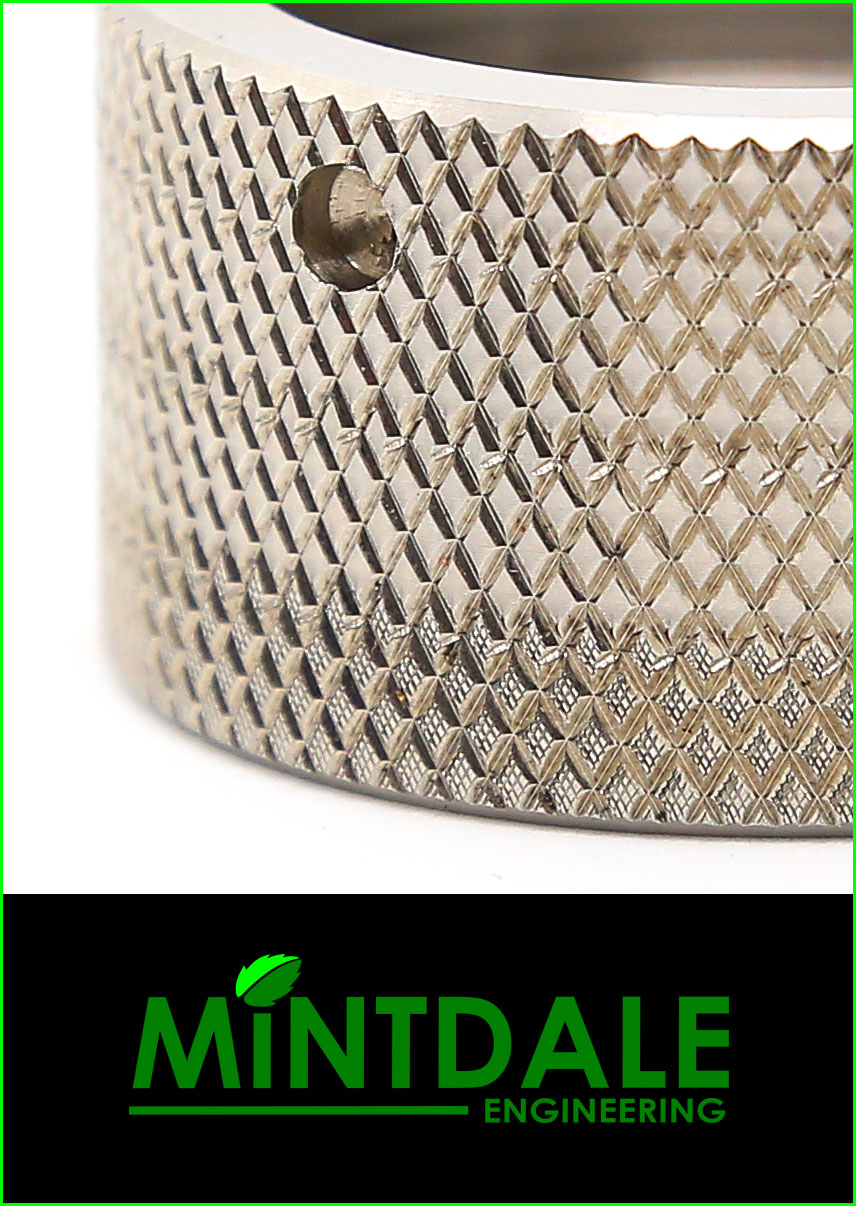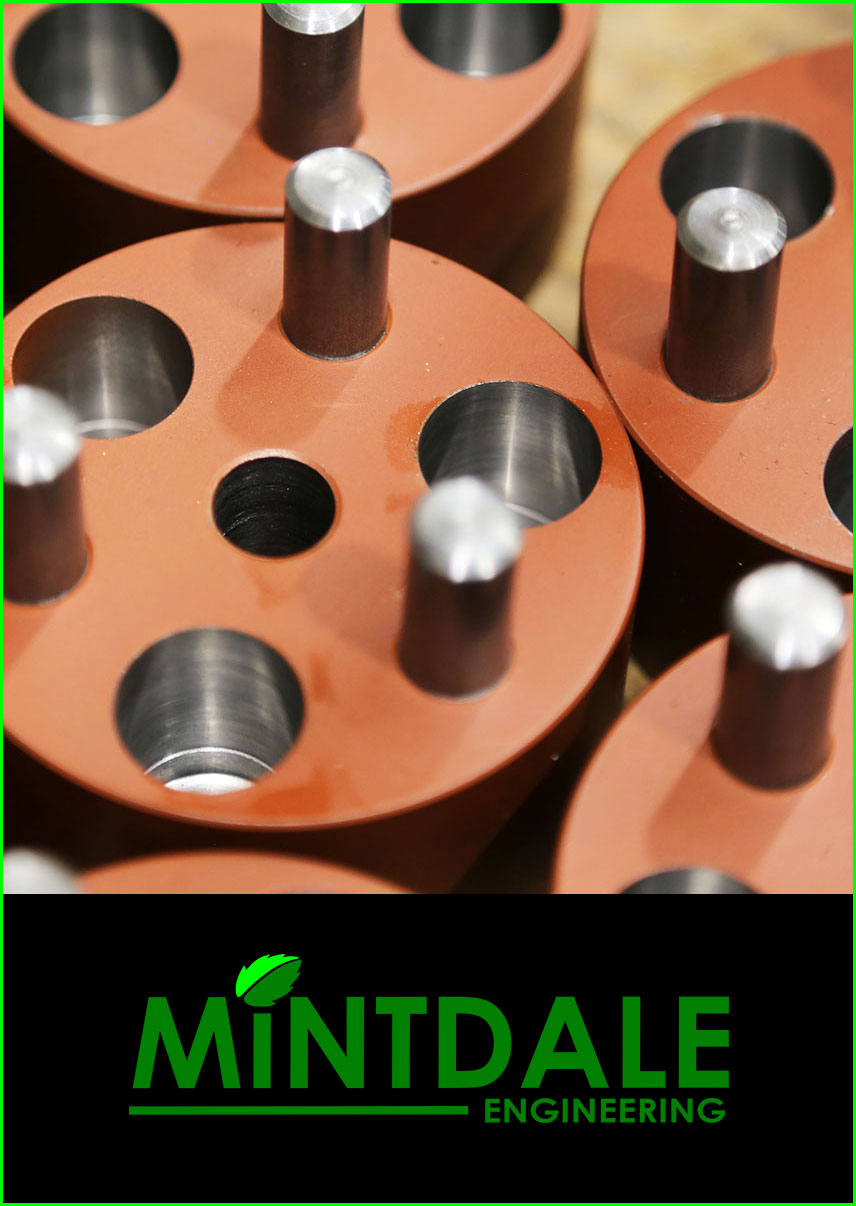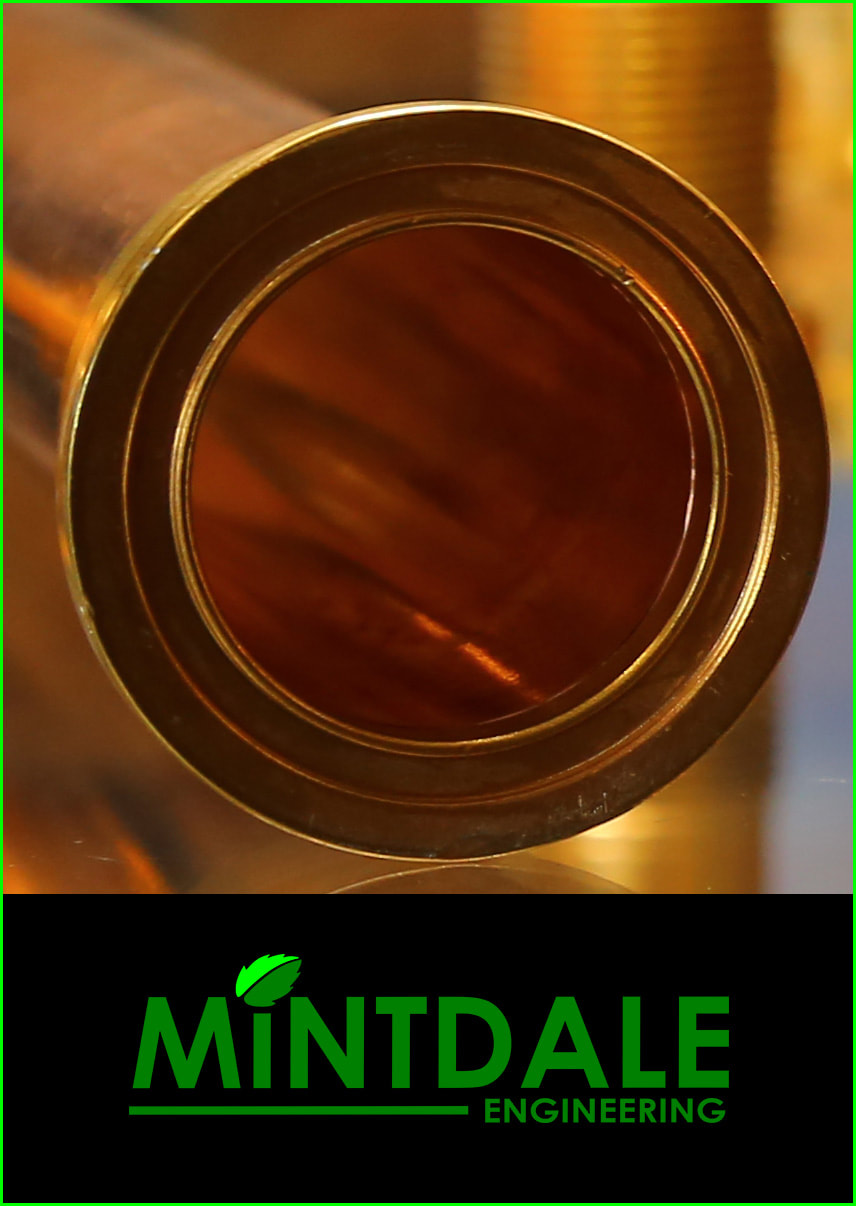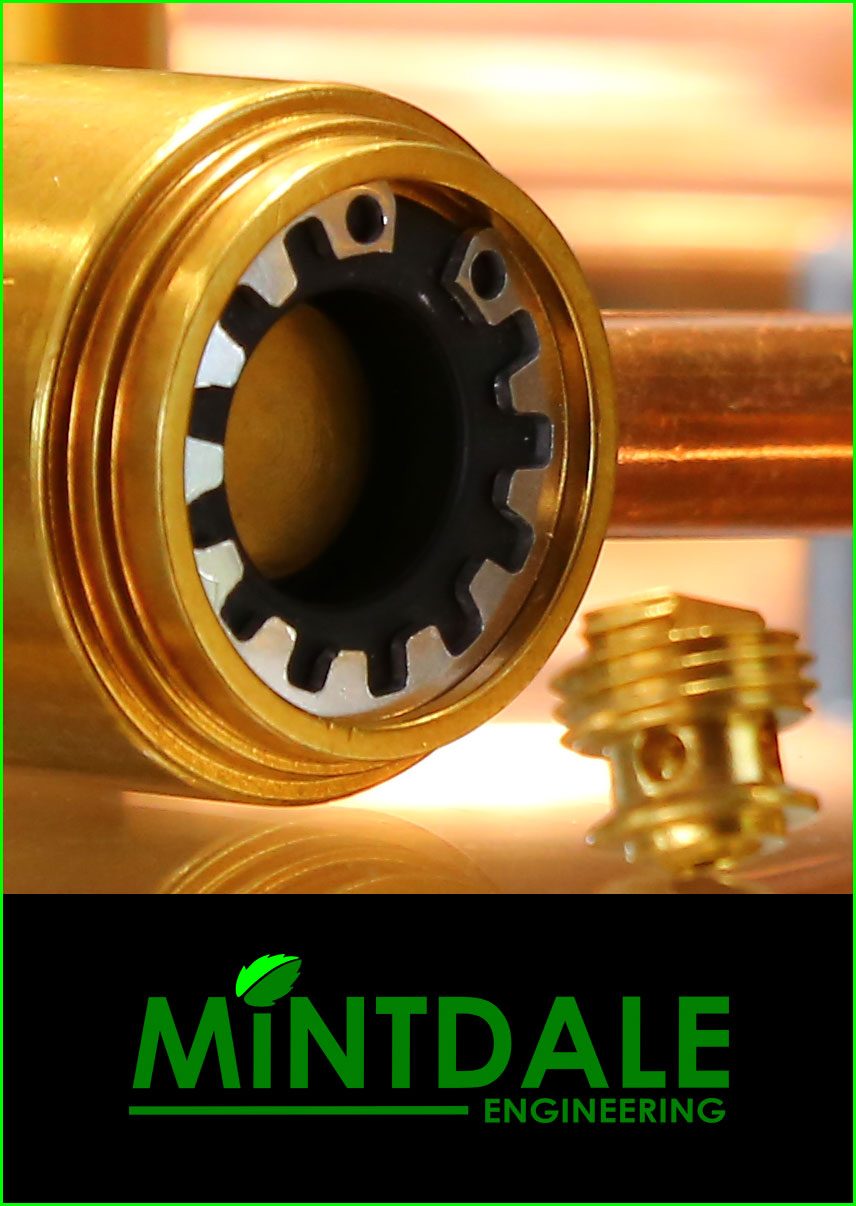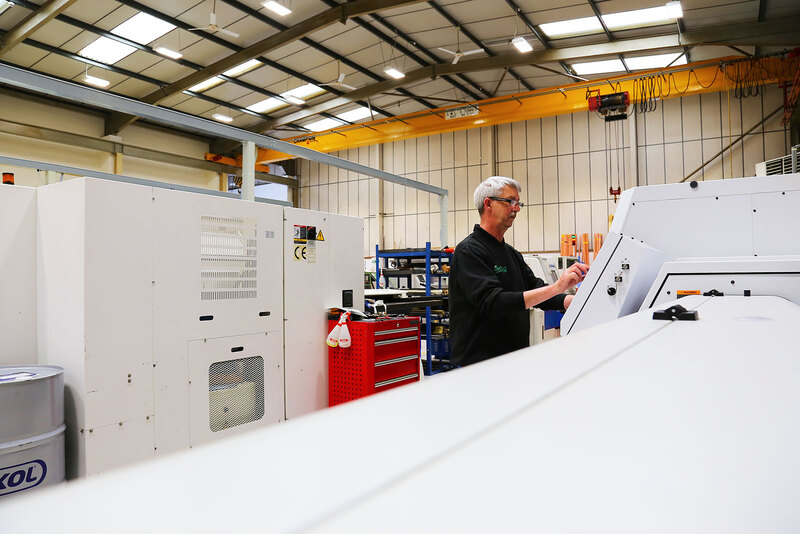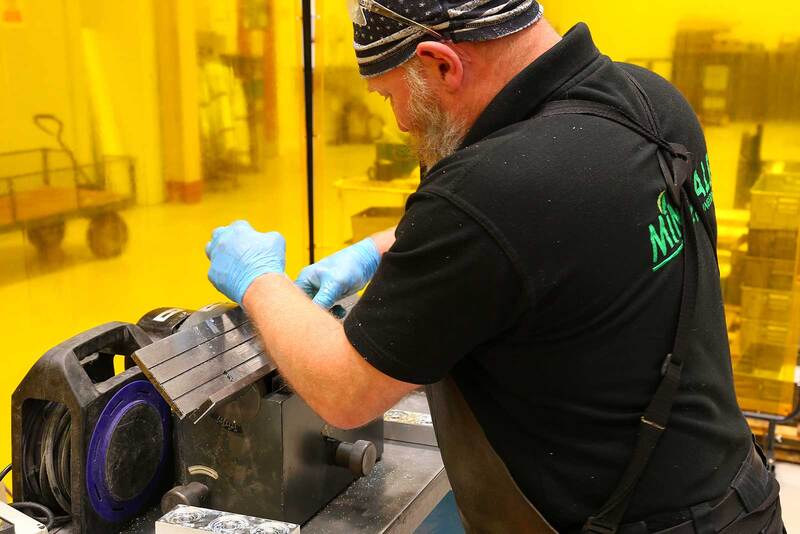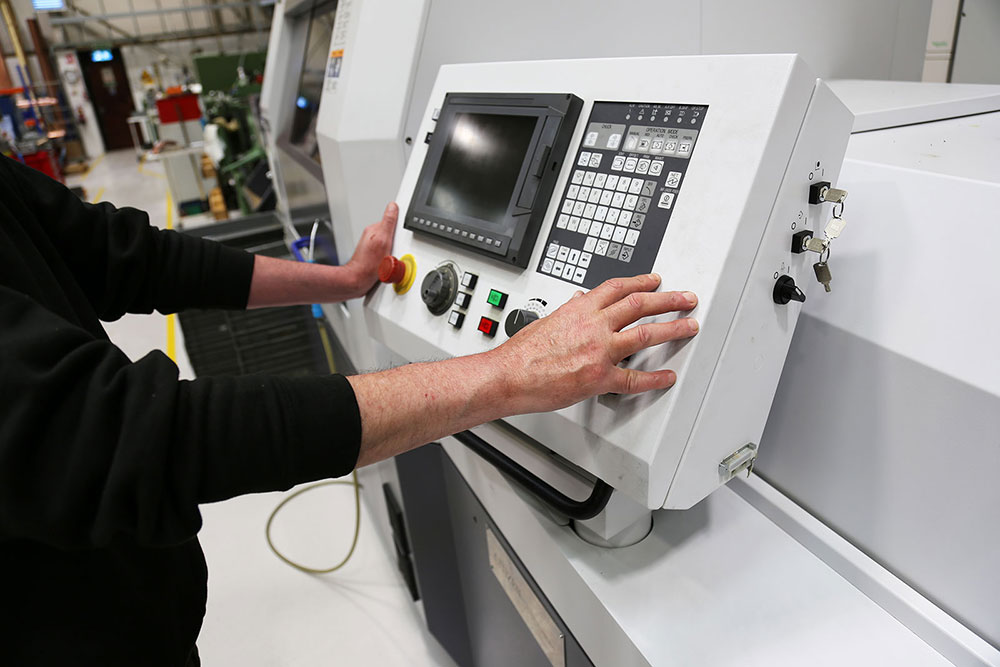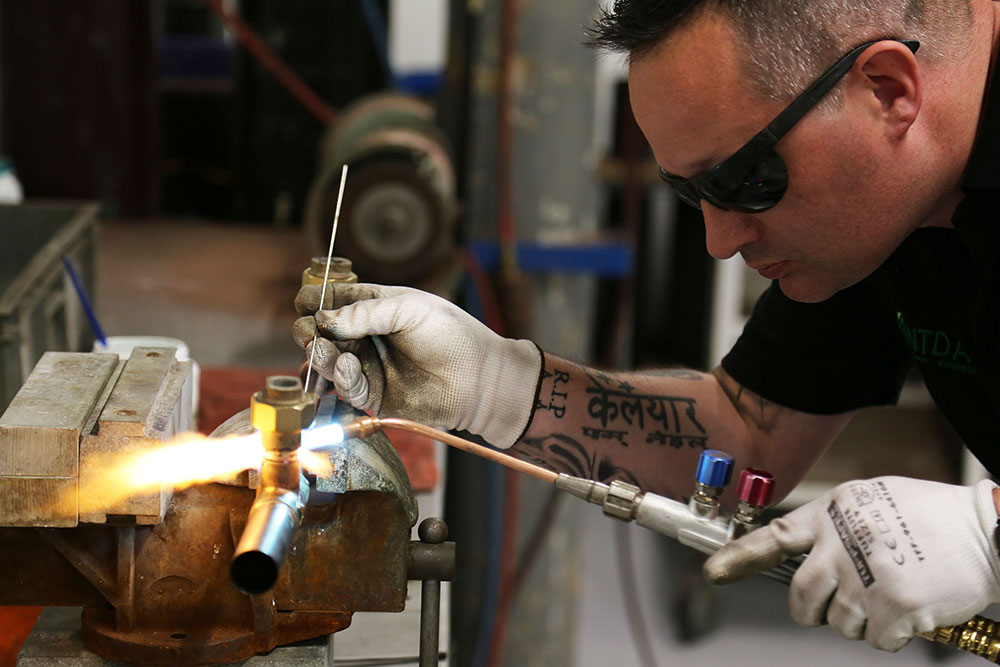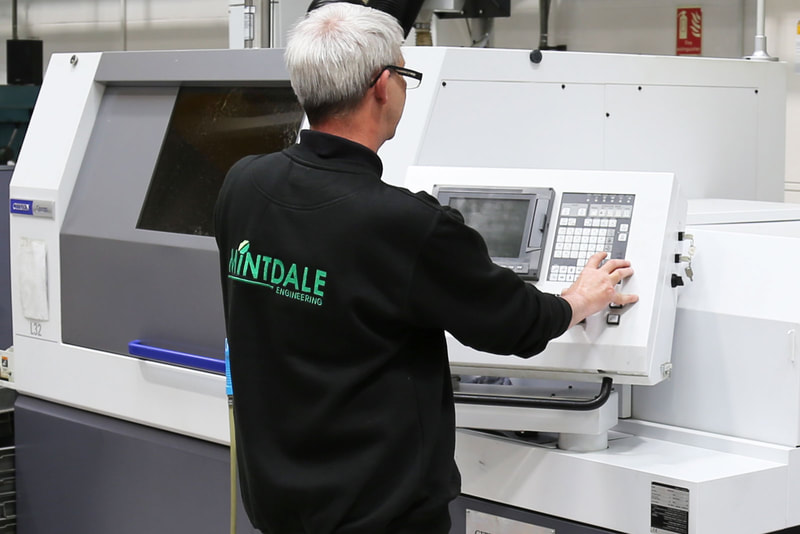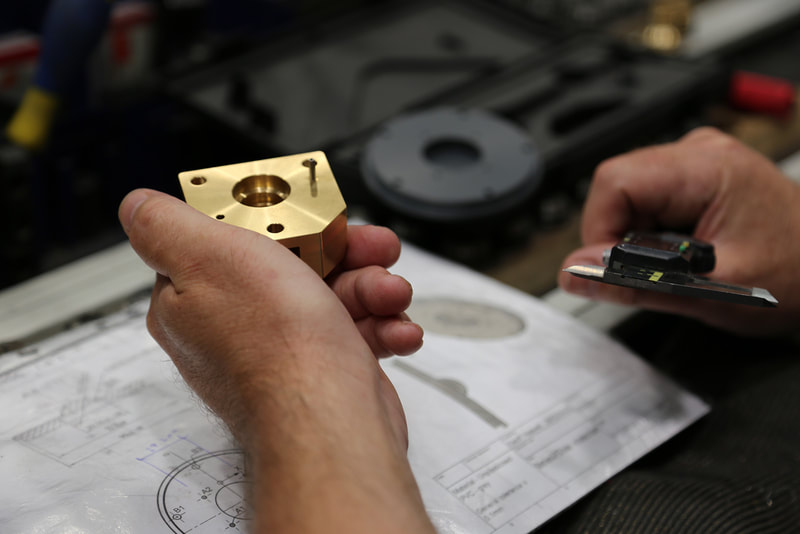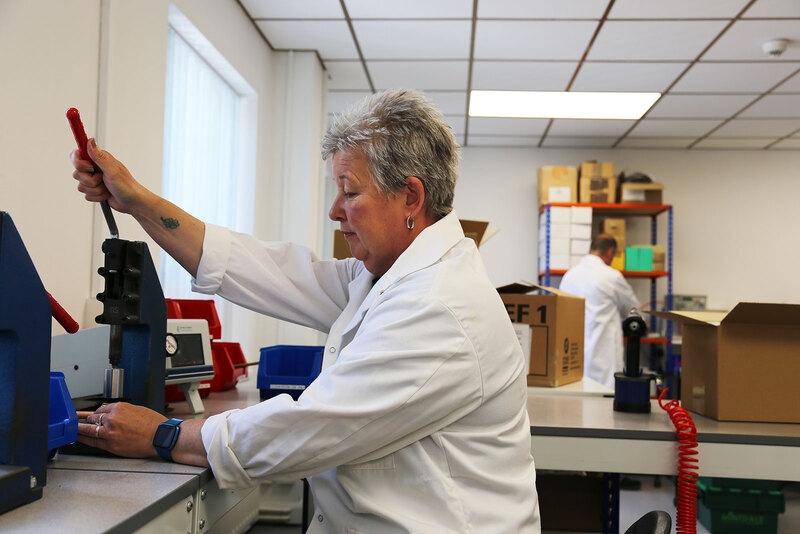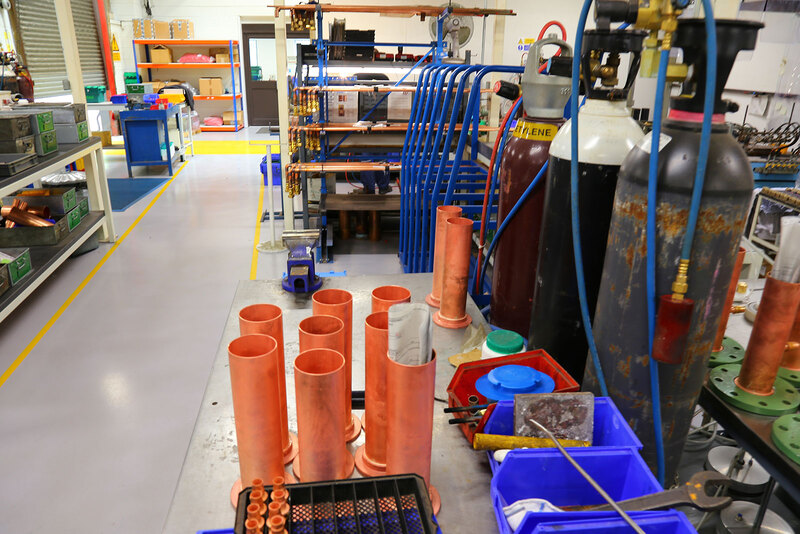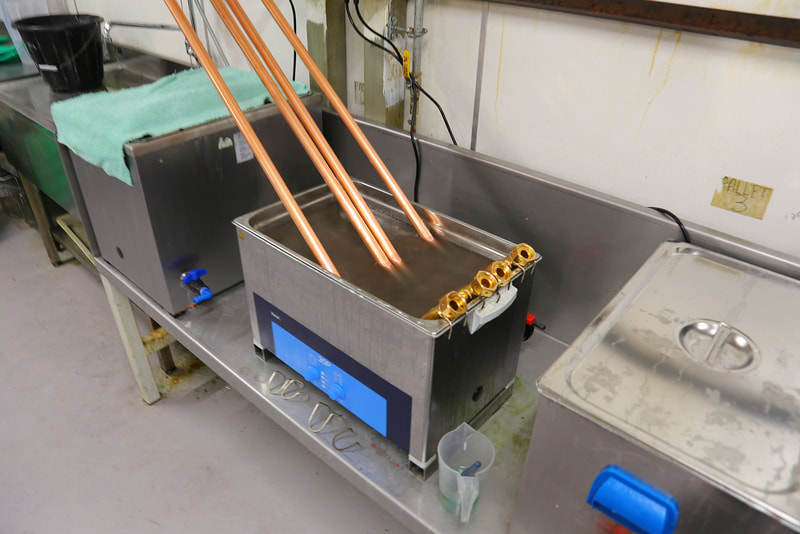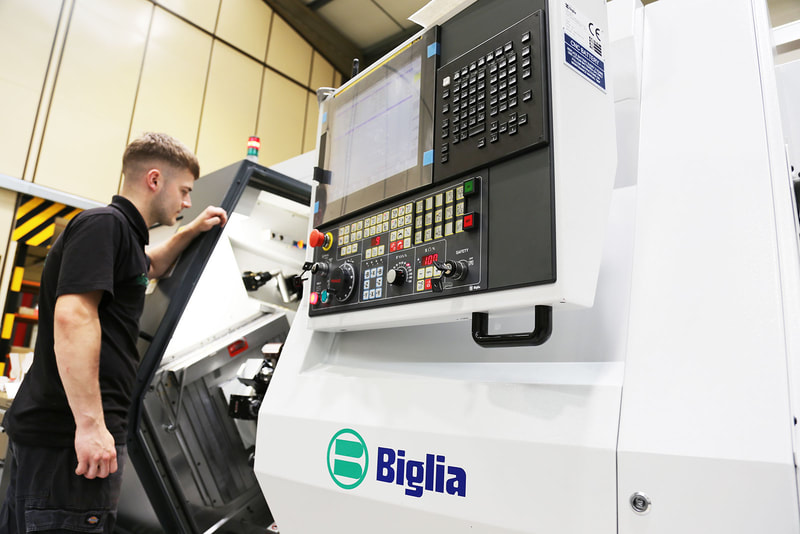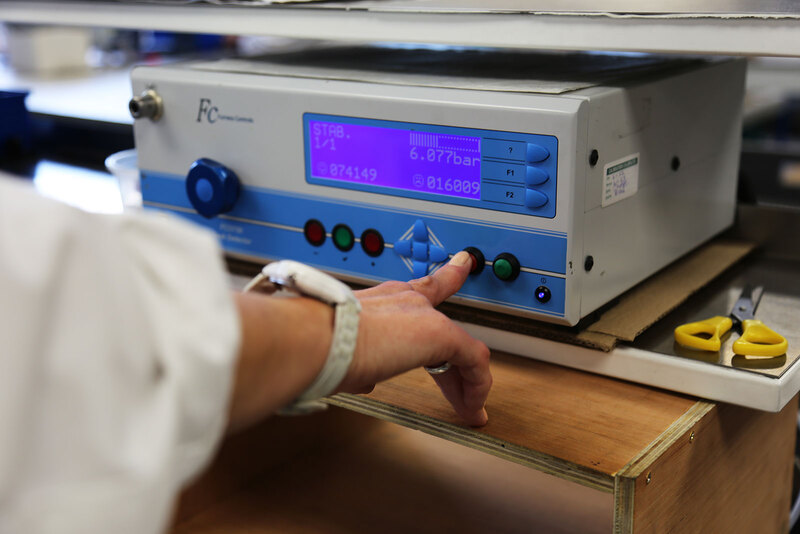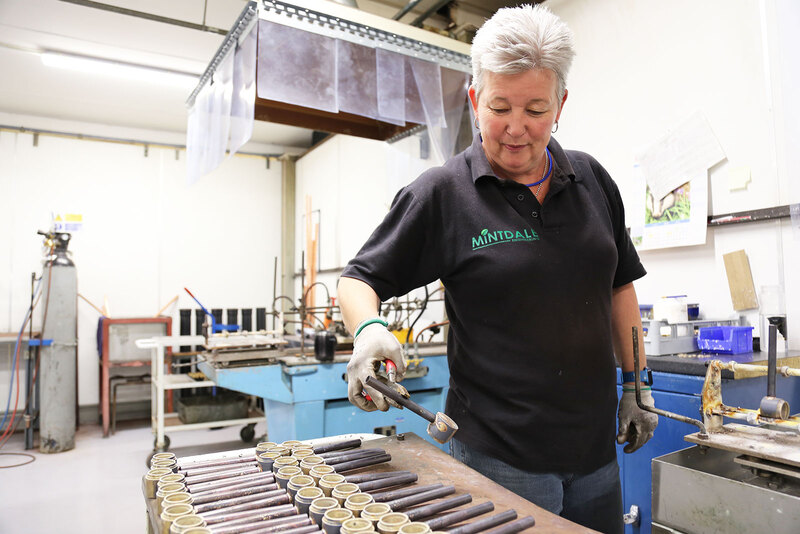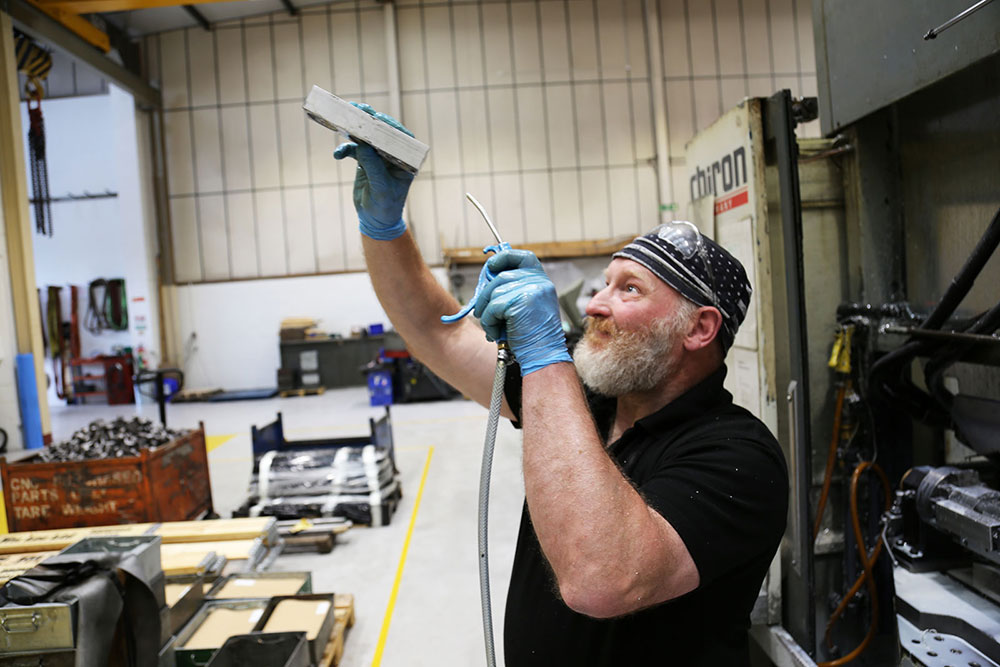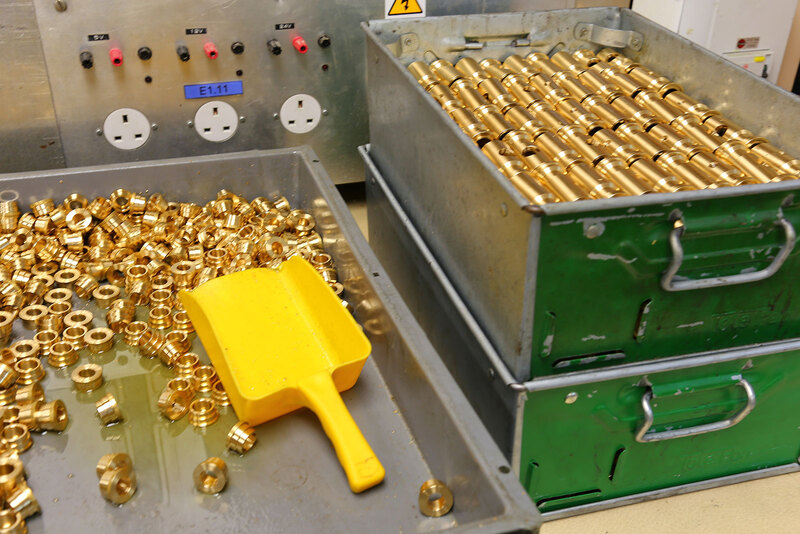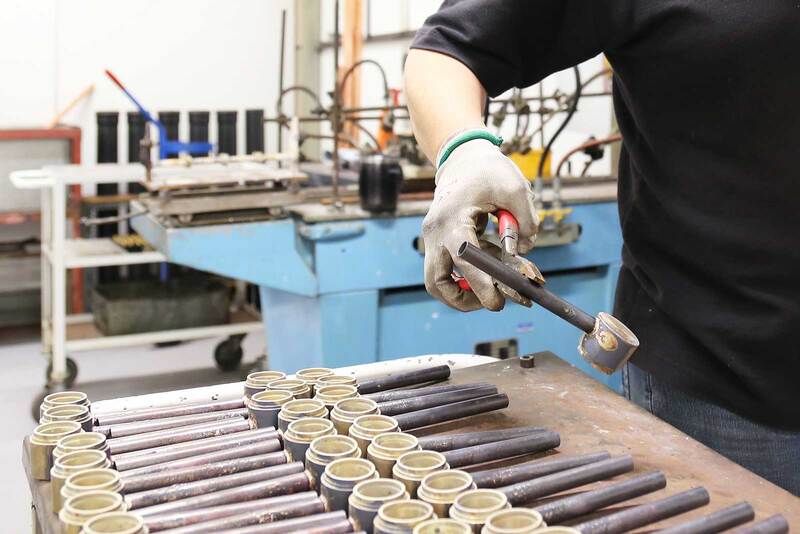Processes
Machined parts sometimes require treatment, for example, heat treatment to make them harder prior to further processing like grinding. Other items may require a surface finish to prevent deterioration of the surface finish. Mintdale use trusted and experienced external partners to do this for them. Below are the surface finishes we have completed for our customers so far, but please ask if you cannot see the one you are looking for.
Anodising – Is a coating mainly aluminium with a protective oxide layer by an electrolytic process in which the metal forms an anode, can be clear or other colours like red
Chemical Blacking - Is a conversion coating meaning that where in other metal finishing processes a layer is added above the substrate, here a coating is achieved through a chemical reaction between the ferrous metal and the oxidising salts used in the Black Oxide coating
Chromate - Is the conversion coating process of depositing an oxide layer over a metal surface to enable the metal to react with the oxide layer. This forms a layer of passivated metal chromate on the surface
Chrome Plate - Is a metal coating method used to create a thin layer of chromium on the surface of a material. Chrome plating uses a technology known as electroplating to create chromium layers that can be less than 0.025 mm
Electro Polish - Is also known as electrochemical polishing or electrolytic polishing (especially in the metallography field). Electropolishing is an electrochemical process that removes a controlled amount of material from the surface of stainless steel and other metal alloys.
Electroless Nickel Plate - Is defined as the deposition of a metallic coating by a controlled chemical reduction that is catalysed by the metal or alloy being deposited
Gas Carborise - Is a surface-hardening process that is carried out at a high temperature, usually above 925°C. Carburizing is essentially the addition of carbon at the surface of low carbon steels at appropriate temperatures
Induction Hardening - A process for hardening steel surfaces by induction heating followed by quenching. It is used to selectively harden areas of a part or assembly without affecting the properties of the part as a whole
Heat Treatment - Heat treatment is a heating and then cooling process using predefined methods to achieve desired mechanical properties like hardness, ductility, toughness, strength, etc
Nickel Plate - Nickel plating is the process of electrolytically depositing a layer of nickel onto a substrate. These nickel deposits are used for: Wear resistance. Corrosion resistance. Hardness. Lubricity and Magnetic purposes
Passivating - Is a non-electrolytic finishing process that makes stainless steel more rust-resistant. The passivation process typically uses nitric or citric acid to remove free iron from the surface, which results an inert, protective oxide layer that is less likely to chemically react with air and cause corrosion
Phosphate - Is the process of converting a steel surface to iron phosphate. This is mostly used as a pre-treatment method in conjunction with another method of corrosion protection, with a layer of phosphate coating typically includes iron, zinc or manganese crystals
Rubber Bonding / Moulding – Is the process of providing a perfect rubber finish to the outside of a machined part, this is provided by one of our external partners onto aluminium CNC turned parts.
Tufftride - Is a proprietary low temperature surface hardening process. The components are placed in a heated salt bath where a reaction takes place between the salt melt and the surface of the components. During the reaction nitrogen and carbon are absorbed and diffused
Zinc Plate - Is the process of covering substrate metals (like steel and iron, etc.) with a layer or coating of zinc to protect the substrate from corrosion. It is primarily used to protect metals from corrosion effects. This process can be done in clear and other colours like yellow
Anodising – Is a coating mainly aluminium with a protective oxide layer by an electrolytic process in which the metal forms an anode, can be clear or other colours like red
Chemical Blacking - Is a conversion coating meaning that where in other metal finishing processes a layer is added above the substrate, here a coating is achieved through a chemical reaction between the ferrous metal and the oxidising salts used in the Black Oxide coating
Chromate - Is the conversion coating process of depositing an oxide layer over a metal surface to enable the metal to react with the oxide layer. This forms a layer of passivated metal chromate on the surface
Chrome Plate - Is a metal coating method used to create a thin layer of chromium on the surface of a material. Chrome plating uses a technology known as electroplating to create chromium layers that can be less than 0.025 mm
Electro Polish - Is also known as electrochemical polishing or electrolytic polishing (especially in the metallography field). Electropolishing is an electrochemical process that removes a controlled amount of material from the surface of stainless steel and other metal alloys.
Electroless Nickel Plate - Is defined as the deposition of a metallic coating by a controlled chemical reduction that is catalysed by the metal or alloy being deposited
Gas Carborise - Is a surface-hardening process that is carried out at a high temperature, usually above 925°C. Carburizing is essentially the addition of carbon at the surface of low carbon steels at appropriate temperatures
Induction Hardening - A process for hardening steel surfaces by induction heating followed by quenching. It is used to selectively harden areas of a part or assembly without affecting the properties of the part as a whole
Heat Treatment - Heat treatment is a heating and then cooling process using predefined methods to achieve desired mechanical properties like hardness, ductility, toughness, strength, etc
Nickel Plate - Nickel plating is the process of electrolytically depositing a layer of nickel onto a substrate. These nickel deposits are used for: Wear resistance. Corrosion resistance. Hardness. Lubricity and Magnetic purposes
Passivating - Is a non-electrolytic finishing process that makes stainless steel more rust-resistant. The passivation process typically uses nitric or citric acid to remove free iron from the surface, which results an inert, protective oxide layer that is less likely to chemically react with air and cause corrosion
Phosphate - Is the process of converting a steel surface to iron phosphate. This is mostly used as a pre-treatment method in conjunction with another method of corrosion protection, with a layer of phosphate coating typically includes iron, zinc or manganese crystals
Rubber Bonding / Moulding – Is the process of providing a perfect rubber finish to the outside of a machined part, this is provided by one of our external partners onto aluminium CNC turned parts.
Tufftride - Is a proprietary low temperature surface hardening process. The components are placed in a heated salt bath where a reaction takes place between the salt melt and the surface of the components. During the reaction nitrogen and carbon are absorbed and diffused
Zinc Plate - Is the process of covering substrate metals (like steel and iron, etc.) with a layer or coating of zinc to protect the substrate from corrosion. It is primarily used to protect metals from corrosion effects. This process can be done in clear and other colours like yellow
Our Range Of Processes
Mintdale Engineering- CNC Multi-Axis Machining
- Vertical CNC Machining
- Vertical and Horizontal CNC Milling
- CNC Mill/Turn
- CNC Turning including Sliding Head
- Hand Brazing
- Induction Brazing
- Clean Medical Assembly
- Product Assembly
- Grinding
- Marking
- Pressing
- Inspection
- Ultrasonic Cleaning
- Leak Testing
- Consignment Stock
- Kan Ban Stock System
- Anodising
- Chroming
- Heat Treatment
- Plating
- Polish
- Rubber Moulding
Our Range Of Finish Processes
Mintdale Engineering- Acid Etch
- Anodise
- Black Anodise
- Red Anodise
- Sulphuric Anodise
- Black Oxidisation
- Chromate to CDS155
- Chrome Plate
- Decorative Chrome Plate
- Electro Polish
- Electroless Nickel Plate
- Nickel Plate
- Gas Carborise
- Hard Anodise
- Heat Treat
- Case Harden
- Harden to 32-36HRc
- Induction Harden
- Vacuum Harden
- Nitride
- Phosphate
- Polish
- Powder Coat
- Rubber Moulding
- Zinc Plate
- Zinc Plate and Chrome Passivate
- Zinc Plate and Dichromate
- Zinc Plate and Passivate
- Spot Weld

